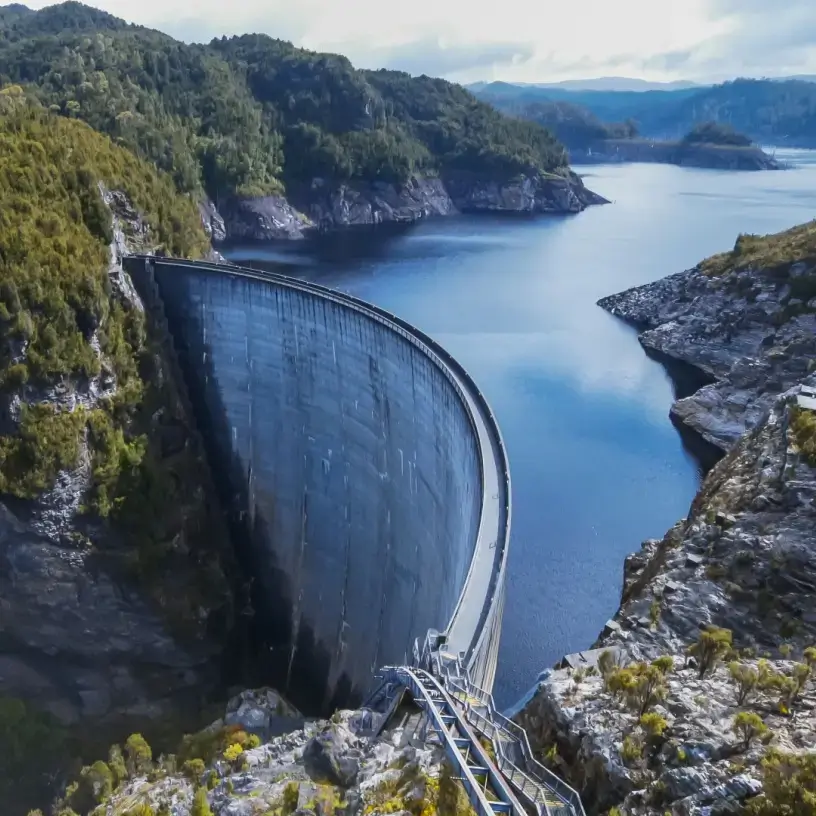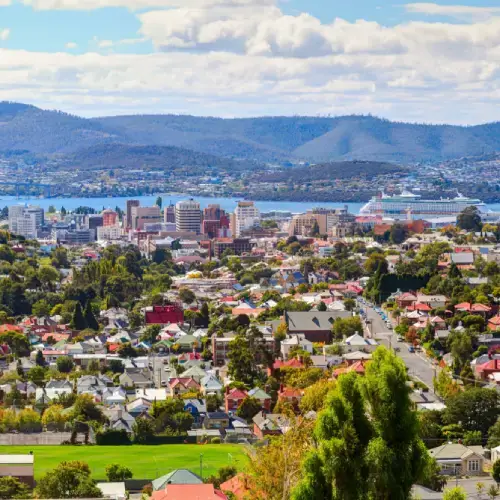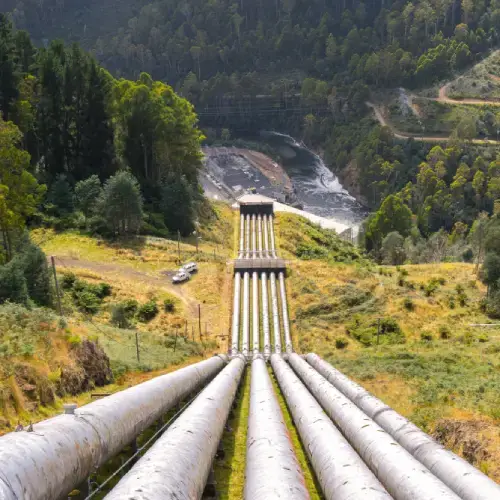Home / Compare Electricity &… / Tasmanian electricity an…
Tasmanian electricity and gas explained



Key takeaways
While Tasmania doesn’t have many choices when it comes to energy retailers (also known as energy providers), the deregulation of Tasmanian energy allows for greater market competition with the goal of driving down retail prices for electricity and gas customers.
- Compare the Market doesn’t currently offer energy plan comparisons for Tasmanian electricity and gas customers.
- While energy is deregulated in Tasmania, the small energy market means there is a limited choice of retailers.
- You may be eligible for concessions on your energy bills depending on your circumstances and if you’re a concession card holder.
Can I compare Tasmanian electricity or gas?
If you live in Tasmania, you may have little choice in your plan options or the number of retailers you can compare. As such, our service doesn’t feature plans in these areas at this time.
You can typically compare gas and electricity plans for your postcode if you live in South East Queensland, New South Wales, the ACT, South Australia or Victoria, or only gas in Western Australia.
To learn more about how governments and retailers set electricity prices, read more about energy deregulation in Australia.
Tasmanian electricity providers and distributors
Electricity providers in Tasmania

In 2014, full retail competition was introduced to the electricity industry in Tasmania, meaning private companies can enter the energy market and sell energy plans to you. Historically, Tasmanians couldn’t choose between power companies. Although the electricity market is still small, there are several Tasmanian electricity providers:
- 1st Energy
- Aurora Energy
- CovaU Energy
- Electricity in a Box
- Energy Locals
- Localvolts
- Momentum Energy
- Nectr Energy
- Solstice Energy.1
N.B.: The number of electricity retailers available in Tasmania is subject to change.
However, while the Tasmanian Government has paved the way for greater competition within the electricity sector, some residents within Tasmania can’t access the benefits.
For instance, residents of the Bass Strait islands are unable to choose their own electricity retailers as Momentum Energy, owned entirely by Hydro Tasmania, commands a monopoly on King and Flinders Islands.
The gas market is still highly regulated in Tasmania, and customers wanting natural gas are supplied by the government-owned retailer, Tas Gas Networks.
Who is the electricity distributor in Tasmania?
Since July 2014, Tasmania’s electricity transmission and distribution has been handled by TasNetworks, which are a company owned by the Tasmanian Government. Similarly, gas distribution in Tasmania is handled by Tas Gas Networks.
How are gas and electricity providers in Tasmania regulated?
Gas and electricity in Tasmania is regulated by the Office of the Tasmanian Economic Regulator (OTTER), which also manages water alongside electricity and gas. OTTER’s work includes:
- Putting a cap on the maximum amount that standing offer customers can be charged for electricity
- Enforcing codes and standards on the supply and distribution of electricity and gas
- Protecting the interests of consumers
- Ensuring a fair and competitive market for consumers and retailers.
Tasmanian electricity charges and tariffs
How am I charged electricity in Tasmania?
When you receive your electricity bill, you will have two separate charges:
- Daily supply charge (the cost of transporting electricity to your home)
- Usage charge (the cost of using electricity in the home).
Your usage charge will vary depending on the kind of tariff you’re on. Tasmania has several electricity tariffs that residents may be able to choose from which affect their energy bills. These tariffs determine the rate you’re charged for electricity use in your home. The better choice between the different tariffs may depend on when you use the most electricity, whether you have solar power and whether you have a smart meter.
Flat rates for residential customers
- Tariff 31. The light and power tariff.
- Tariff 41. The heating and hot water tariff.
Usually, households connect to both 31 and 41 and this is known as the flat rate.
Peak and off-peak rates for residential customers
- Tariff 93. This tariff charges you different rates depending on peak (7-10am and 4-9pm on weekdays) or off-peak (10am-4pm, 9pm-7am and weekends) times in your household.
Other residential tariffs available in Tasmania
- Tariff 61. This tariff is now obsolete, so it cannot be chosen by new customers but is still available for current customers. It sets off-peak rates during the late afternoon and night, mainly for heating, swimming pools and hot water used during this off-peak time.
- Tariff 62. This tariff is the same as 61 but is overnight only. It can be used along with the flat rate (tariff 31/41) or tariff 93.
- Solar feed-in tariff. If they have a solar energy system and a smart meter, customers may be able to receive the solar feed-in tariff. For the 2023-2024 period, Tasmania’s minimum solar feed-in tariff rate is 10.869 cents per kilowatt hour (kWh).2
Important to know
Are you eligible for an electricity concession in Tasmania?

The Tasmanian Government has several concessions available to help in-need and low-income households deal with costly electricity bills.
Annual electricity concession
The most common rebate is the annual electricity concession, which provides eligible cardholders with a daily discount of $1.72343.3
You may be eligible for this concession if you hold one of the following:
- Services Australia or DVA Pensioner Concession Card
- Services Australia Health Care Card
- ImmiCard (Bridging Visa E)
Energy bill relief fund
This is a temporary concession of $250 applied to your bill half-yearly from September 2023, with the last payment in July 2025, to help with the cost of energy bills.3 If you already receive the annual electricity concession, you will receive this automatically.
Even if you don’t, you may still be eligible for this concession but will need to contact your electricity retailer to register. The energy bill relief fund is available to customers who are the electricity account holder and hold or receive one of the following:
- Services Australia or DVA Pensioner Concessions Card
- Services Australia Health Care Card
- Services Australia or DVA Commonwealth Seniors Health Card
- Veteran Gold Card
- Family Tax Benefit
- Carer Allowance.
Heating allowance
This is a payment made to pensioners twice a year to help with heating costs.
This rebate is available to people with either a Services Australia Concession Card or a DVA Pensioner Concession Card, and are already receiving a payment for one of the following:
- Pension
- Carer Payment
- Disability Support Pension (DSP)
- Parenting Payment
- Service Pension.
Other concessions may be available, including the life support concession and the medical cooling and heating concession. If you have any further questions about possible rebates you may be entitled to, consider checking out our page on energy concessions across Australia.
What are the sources of energy in Tasmania?
The energy industry in Tasmania is primarily focused on renewable energy. As of November 2020, all of Tasmania’s electricity generation primarily comes from renewable energy sources.4 These power sources include:
- Hydroelectricity
- Wind farms
- Natural gas (not entirely renewable but still critical for commercial use and some residential appliances).
Tasmanians can also install solar panels to help generate power for their own home.
Meet our energy expert, Meredith O’Brien
As the Head of Energy at Compare the Market, Meredith O’Brien believes in educating Australian customers about the everchanging gas and electricity market so they can adjust their energy usage habits and get the most out of their energy plans.
Meredith has six years within the energy industry, following 15 years of experience in financial services and is currently studying a Master of Business Administration. Meredith is a dedicated customer advocate who is passionate about empowering Australians to find the right products to suit their needs by removing the confusion from comparing.
Want to know more about energy?
1 Tasmanian Government. Tasmanian electricity retailers. Last updated September 2023. Accessed October 2023.
2 Office of the Tasmanian Economic Regulator. Feed-in tariff. Last updated June 2023. Accessed October 2023.
3 Tasmanian Government – Discounts and Concessions. Electricity. Accessed October 2023.
4 Renewable, Climate and Future Industries Tasmania. 100% Target Achievement. Accessed October 2023.

